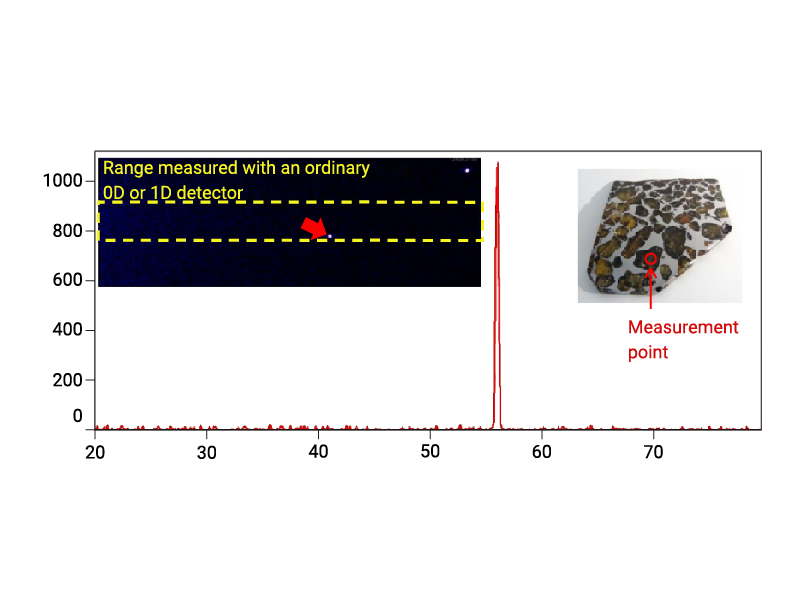Introduction
A stony-iron meteorite is like a single crystal. When using 0- or 1-dimensional detectors, only a few diffraction peaks are observed. In this situation, identification of crystalline phases cannot be conducted. Therefore, a stony-iron meteorite was analyzed using the multi-dimensional detector, HyPix-3000, which has an effective detection area for the identification of crystalline phases.
Measurements and results
A stony-iron meteorite was analyzed using the HyPix-3000. Inside a stony-iron meteorite, there are transparent parts similar to glass and opaque parts similar to metal. The transparent parts were thought to be non-crystalline (amorphous). However, when measurement of the transparent part was actually performed, only one diffraction line was observed. In general, when measurement is done with a 0D or a 1D detector, the range in which diffraction X-rays can be detected from the sample is limited to a certain region. (This region is indicated in yellow in Fig. 1.) In this experiment, the diffraction lines, indicated with red arrows, are within the scanning range, and therefore can be detected. On the other hand, it is possible to acquire information on multiple lattice planes, as shown in Fig. 2, by using the HyPix-3000, which has a wide effective detection area, and by performing measurement while oscillation the sample. When the 2D diffraction image obtained in Fig. 2 was converted to a 2θ-I profile and qualitative analysis of the transparent part was carried out, it was possible to identify forsterite (Mg₂SiO₄) (Fig. 3). Since diffraction spots were observed, it was conjectured that the glass-like transparent part is a single crystal or is comprised of an extremely small number of crystal grains.



